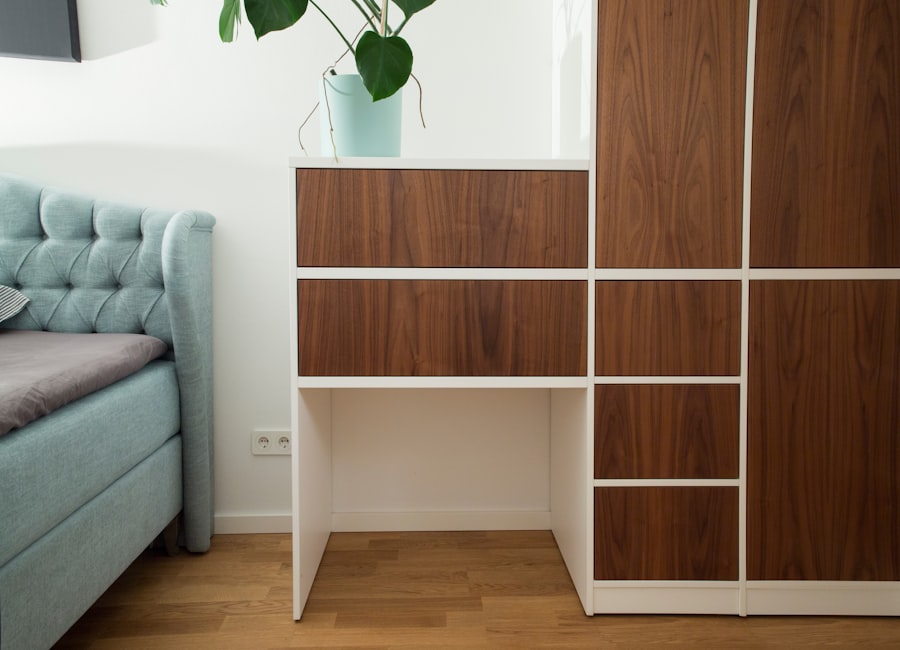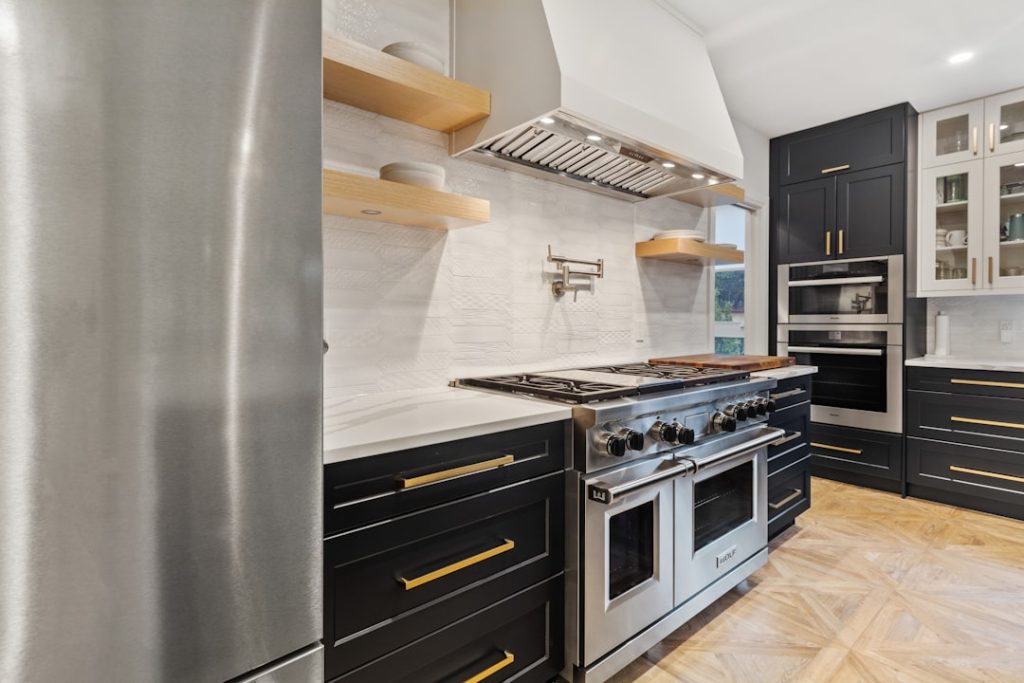Before embarking on a cabinetry project, it is crucial to take a step back and assess your specific needs and goals. This initial phase serves as the foundation for the entire design process, ensuring that the final product aligns with your lifestyle and aesthetic preferences. Begin by evaluating the space where the cabinetry will be installed.
Consider the dimensions, layout, and existing architectural features. For instance, if you are renovating a kitchen, think about how often you cook, the types of appliances you use, and whether you entertain guests frequently. These factors will influence not only the design but also the functionality of the cabinetry.
In addition to spatial considerations, it is essential to identify your personal style and how it integrates with the overall theme of your home. Are you drawn to modern minimalism, rustic charm, or perhaps a classic traditional look? Collecting inspiration from various sources—such as design magazines, online platforms like Pinterest, or even visiting showrooms—can help clarify your vision.
Furthermore, setting a budget is a critical component of this assessment phase. Understanding how much you are willing to invest will guide your choices in materials, finishes, and professional services. By clearly defining your needs and goals upfront, you create a roadmap that will streamline the design process and lead to a more satisfying outcome.
Key Takeaways
- Assess your needs and goals before starting the custom cabinetry project to ensure it meets your specific requirements.
- Choose the right materials and finishes that align with your design aesthetic and lifestyle for a cohesive look and long-lasting durability.
- Working with a professional designer can help bring your vision to life and ensure the custom cabinetry meets your expectations.
- Maximize storage and functionality by incorporating smart design solutions and organizational features into your custom cabinetry.
- Incorporate custom features and details to add a personal touch and elevate the overall design of your space.
Choosing the Right Materials and Finishes
The selection of materials and finishes is one of the most significant aspects of cabinetry design, as it directly impacts both aesthetics and durability. Wood remains a popular choice for cabinetry due to its natural beauty and versatility. Different species of wood offer varying grains, colors, and hardness levels.
For example, oak is known for its strength and prominent grain patterns, while maple provides a smoother finish that can be easily stained or painted. Additionally, engineered materials like plywood or MDF (medium-density fiberboard) can be excellent alternatives for those seeking cost-effective options without sacrificing quality. Finishes also play a pivotal role in the overall look and feel of your cabinetry.
The choice between paint, stain, or a natural finish can dramatically alter the appearance of the wood. A painted finish can provide a sleek, contemporary look, while stains enhance the natural beauty of the wood grain. Moreover, consider the sheen level—matte finishes offer a more understated elegance, while glossy finishes can create a striking visual impact.
Beyond aesthetics, it is essential to choose finishes that are durable and easy to maintain. For instance, water-resistant finishes are ideal for kitchen environments where spills are common, while UV-resistant coatings can protect cabinetry in sunlit areas from fading over time.
Working with a Professional Designer

Collaborating with a professional designer can elevate your cabinetry project from ordinary to extraordinary. Designers bring a wealth of knowledge and experience to the table, helping you navigate through the myriad of choices available. They can assist in translating your vision into practical designs that maximize both beauty and functionality.
A skilled designer will conduct an in-depth consultation to understand your preferences, lifestyle needs, and budget constraints. This dialogue is crucial for creating a tailored design that reflects your unique taste while adhering to practical considerations. Moreover, professional designers have access to resources and materials that may not be readily available to the average consumer.
They can recommend high-quality suppliers and manufacturers who specialize in custom cabinetry, ensuring that you receive products that meet industry standards for durability and craftsmanship. Additionally, designers are adept at spatial planning; they can optimize layouts to enhance flow and usability within your space. For example, they might suggest incorporating pull-out shelves or lazy Susans in corner cabinets to make better use of otherwise wasted space.
By leveraging their expertise, you can avoid common pitfalls and achieve a cohesive design that enhances your home’s overall aesthetic.
Maximizing Storage and Functionality
| Storage Solution | Functionality | Benefits |
|---|---|---|
| Shelving Units | Organize items | Maximize vertical space |
| Storage Bins | Contain clutter | Easy to access and store |
| Drawer Dividers | Separate small items | Keep items neatly arranged |
In any cabinetry project, maximizing storage and functionality should be at the forefront of your design considerations. Custom cabinetry offers an unparalleled opportunity to tailor storage solutions that meet your specific needs. Traditional cabinets often fall short in terms of efficient use of space; however, custom designs allow for innovative solutions that can transform even the smallest areas into functional storage havens.
For instance, incorporating vertical dividers in kitchen cabinets can create designated spaces for baking sheets or cutting boards, while deep drawers can accommodate pots and pans more effectively than standard shelves. Additionally, consider integrating multi-functional elements into your cabinetry design. For example, a kitchen island with built-in shelving can serve as both a cooking space and a casual dining area.
In living rooms or home offices, cabinetry can be designed to include hidden compartments for electronics or office supplies, maintaining a clean aesthetic while providing easy access to necessary items. Furthermore, utilizing vertical space by extending cabinets up to the ceiling not only maximizes storage but also creates an illusion of height in smaller rooms. Thoughtful planning in this area ensures that every inch of your cabinetry serves a purpose while enhancing the overall functionality of your space.
Incorporating Custom Features and Details
Custom cabinetry allows for an array of personalized features and details that can elevate your design from standard to exceptional. One way to achieve this is through the incorporation of unique hardware options such as knobs, pulls, and hinges that reflect your personal style. For instance, vintage brass hardware can add a touch of nostalgia to a farmhouse kitchen, while sleek stainless steel handles may complement a modern aesthetic beautifully.
The choice of hardware not only serves a functional purpose but also acts as an accent that ties together various elements within the room. Beyond hardware, consider integrating specialized features that cater to your lifestyle needs. For example, if you are an avid cook or baker, incorporating pull-out spice racks or built-in knife blocks can enhance efficiency in meal preparation.
In laundry rooms or mudrooms, custom cabinetry with designated spaces for shoes or cleaning supplies can streamline organization and accessibility. Additionally, lighting plays a crucial role in showcasing custom features; under-cabinet lighting can illuminate workspaces while highlighting beautiful finishes or decorative items displayed on open shelves. By thoughtfully incorporating these custom details into your cabinetry design, you create a space that is not only visually appealing but also tailored to your everyday life.
Understanding the Installation Process

The installation process for custom cabinetry is a critical phase that requires careful planning and execution. It typically begins with precise measurements taken by professionals to ensure that each piece fits seamlessly into its designated space. This step is vital; even minor discrepancies can lead to significant issues during installation.
Once measurements are confirmed, the cabinetry is fabricated according to the agreed-upon designs and specifications. This stage may involve cutting materials to size, applying finishes, and assembling components before they are transported to your home. When it comes time for installation, it is essential to have skilled professionals handle the process.
Experienced installers understand how to navigate potential challenges such as uneven walls or floors that may affect cabinet alignment. They will also ensure that all components are securely fastened and properly leveled for optimal functionality. During this phase, communication between you and the installation team is key; any last-minute adjustments or concerns should be addressed promptly to avoid complications later on.
Once installed, thorough inspections should be conducted to ensure everything meets quality standards before finalizing the project.
Maintaining and Caring for Your Custom Cabinetry
Proper maintenance is essential for preserving the beauty and functionality of custom cabinetry over time. The type of materials used will dictate specific care requirements; for instance, wood cabinets may need periodic polishing or conditioning to prevent drying or cracking. Regular dusting with a soft cloth can help maintain their appearance by preventing buildup that could dull finishes or scratch surfaces.
Additionally, using gentle cleaning solutions specifically designed for wood surfaces will help avoid damage from harsh chemicals. In kitchens or bathrooms where moisture is prevalent, it’s important to monitor for signs of water damage or mold growth regularly. Wiping down surfaces after use can prevent moisture accumulation that could lead to long-term issues.
For painted finishes, touch-up paint may be necessary over time to address minor scratches or chips that occur with daily use. By establishing a routine maintenance schedule tailored to your cabinetry’s materials and finishes, you can ensure that your investment remains in excellent condition for years to come.
Enjoying the Benefits of a Revamped Space
Once your custom cabinetry project is complete, you will likely find yourself reveling in the numerous benefits it brings to your space. A well-designed cabinetry system not only enhances aesthetics but also significantly improves functionality within your home. The increased storage capacity allows for better organization of belongings, reducing clutter and creating a more serene environment.
Whether it’s a kitchen filled with neatly arranged cookware or a living room showcasing curated decor items behind glass doors, custom cabinetry transforms how you interact with your space. Moreover, custom cabinetry often adds value to your home by elevating its overall appeal in the eyes of potential buyers should you decide to sell in the future. High-quality craftsmanship combined with personalized design elements creates an inviting atmosphere that resonates with prospective homeowners looking for unique features.
Ultimately, enjoying the benefits of revamped cabinetry extends beyond mere aesthetics; it enhances daily living experiences by providing tailored solutions that cater specifically to your lifestyle needs while reflecting your personal style throughout your home.



